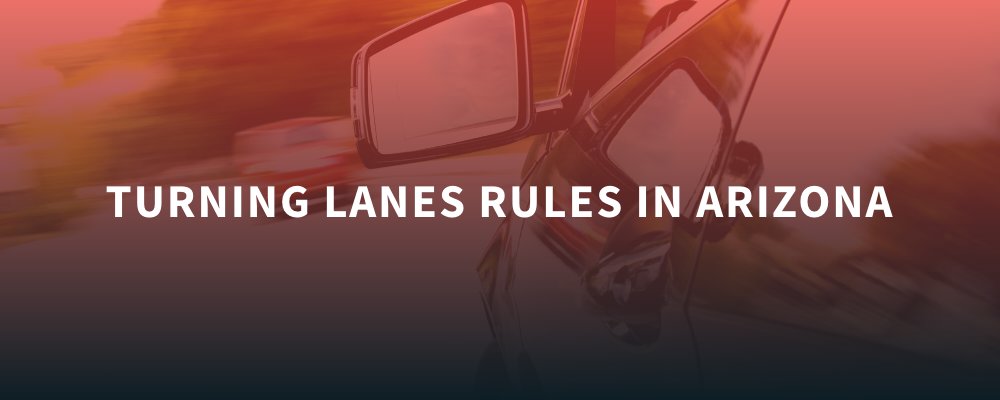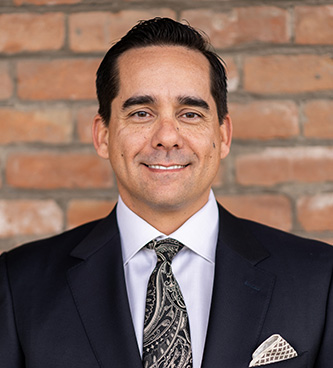
Center lanes are supposed to make things safer for drivers while keeping traffic moving efficiently when one or more drivers want to turn. The reality of a center turn lane often means that it introduces more danger on the roadways. If you have been hurt in a center lane turn accident, you may be entitled to financial compensation if the other driver was at fault for what happened.
While there are some liability presumptions that apply to any accident where one car was turning, you should never reach any conclusions on your own without checking with an attorney. Call the car accident attorneys at Torgenson Law to learn more about your legal rights during a free initial consultation. We will review your case and provide you with the next steps you can take.
Arizona roads are known to be wide to accommodate the growing amount of traffic in the region. The center lane exists on busy roads to give both drivers on a two-way street a better ability to make a safe turn without blocking the regular lanes of traffic. Without the center lane, traffic would stop if one driver decided that they needed to make a left turn.
A center lane is a dedicated lane between traffic passing in both directions. Yellow lines surround the center turn lane. On the outside, there would be a solid yellow line, with an inner one dashed. The lines are intended to inform drivers of the limited uses of the center line.
Drivers remain in the center lane until it is safe for them to make a turn. Thus, traffic is free to continue moving around them, and the driver is not at risk of being rear-ended by a motorist behind them who does not see them slowed or stopped.
Drivers may also turn into the center lane from a side street. It may be safer for them to turn into the center lane first before they merge into the faster moving lane next to it. When a driver is merging into the center lane, they should reassess the traffic situation in the adjacent lane before they change into that lane. In other words, there are two steps to the lane-changing maneuver.
Drivers must proceed with caution in a center turn lane because there could be another vehicle heading directly at them. They should drive slowly in the center lane, although it can be difficult to speed up to merge into the faster traffic.
If there is a center turn lane, it is the only lane from which a driver can make a turn. Arizona law states that “a driver shall not make a left turn from any other lane,” meaning that a motorist cannot cut across the center lane to make a turn.
Before entering the lane, the driver should make a turn signal to show their intent to change lanes. Then, they should clearly indicate that they will turn from the center lane again through the use of the signal.
Drivers are not supposed to drive in the center lanes as a means of avoiding regular traffic. They are only supposed to use the lanes when they wish to make a turn. The driver should only be in the lane when they are preparing to make a left turn. Police will pull a driver over and issue a citation if the motorist is using the center turn lane as a regular lane in which to drive. They also cannot turn into and out of the lane as a way of getting around stopped traffic.
There are times when the center lane is the third lane in traffic. Then, the law allows a driver to use the center lane to pass a slower-moving vehicle. However, this does not mean that a center lane is always to be used for these purposes. There must be a sign that instructs you that you can pass in this lane. Still, the lane cannot be used for anything other than turning or passing. It is not to be used as an express lane when there is slower-moving traffic. Generally, a driver is only allowed to drive for up to 200 feet in the center turning lane before they have to make a turn.
Abusing the turning lane could even be an example of reckless driving, depending on how fast the motorist was traveling. Much would depend on the discretion of the officer if they pulled a driver over for illegally traveling in the center turn lane.
Center lane roads are supposed to make driving easier and less stressful. The intention is that drivers are going slower in these lanes, and it reduces the risks of an accident. Still, drivers would face a number of challenges when using the center turn lanes, including:
Even though they are meant to be convenient and keep traffic flowing, center turn lanes could end up being counterproductive and dangerous. In general, a large proportion of car accidents happen when one driver is making a turn, it follows that there could be a higher rate of accidents when a center turn lane is involved.
Turning is perhaps the most dangerous activity that a driver can perform behind the wheel. They need to focus completely on what they are doing and act cautiously. At the same time, other drivers must anticipate when another driver will try to make a turn.
All it takes is a momentary mistake by one driver to cause a serious center-turn lane accident. Common causes of center lane turn accidents include:
When you hire a car accident lawyer, they will perform a complete investigation of your accident, gathering the evidence that can prove who was to blame and why.
Center lane car accidents usually happen when one car is turning or merging. One of the two cars may be traveling at a higher speed, meaning that there is a possibility of more serious injuries. In addition, the front of one car may strike the other, meaning that for one driver, there may be injuries that are consistent with a head-on car accident.
Common center lane car accident injuries include:
If you have suffered any type of injury in a car accident, it is essential that you are proactive about getting the medical help you need. It may be a good idea to act with an abundance of caution and see a doctor, even if you do not think you have been hurt, because you never know what type of injuries are lurking beneath the surface. Car accident injuries can grow worse over time if they are not treated.
To qualify for financial compensation after you have been injured in a center lane turn accident, you would need to prove that the other driver was negligent. In a car accident case, there is a presumption that the driver, who did not have the right of way at the time of the accident, would be the one who is to blame. In other words, the driver who was making the turn and was not established in traffic would be legally responsible when they have caused an accident.
Like any traffic accident case, a presumption is not an ironclad reality. There are ways that you can overcome the presumption if you were the driver who was making the turn, including by showing that:
In addition, there is a small chance that the traffic engineering and design could have been negligent and the cause of your accident. Then, you may be able to sue the local government that was responsible for designing and maintaining the roadway.
Even if you believe that you have the right of way, you should still always present evidence of what happened to cause the accident. Never underestimate the insurance company’s ability to deny a claim or to generally make your life more difficult.
Never assume that you are not entitled to any financial compensation whatsoever in any Arizona car accident case. Arizona has laws that are favorable to drivers, allowing them to receive financial compensation when they were anything less than 100% to blame for the accident. Even if you were mostly at fault for what happened, you could still get some financial compensation if the other driver bears even part of the blame for the accident.
At the same time, you should also be wary of the insurance company’s efforts to point the finger at you when you were not to blame at all for the accident. The insurance company is often looking to spread the blame because it means that they would pay less money. Your attorney’s job is to defend you from any unfair and wrongful allegations relating to your own conduct.
If the insurance company persists in unfairly blaming you for part or all of the actions, you have legal options. You can take your case to court, and a jury would determine who was liable and award financial compensation.
In the meantime, it is crucial that you not speak to the other driver’s insurance company. They are looking for any reason that they can to blame you for as much of the accident as possible. Meanwhile, you could also quickly lose the evidence that you need to prove your side of the story if you do not take steps to investigate and gather the proof.
While you should fully pursue the legal process, you should do as little as possible on your own. The best thing that you can do is hire an experienced attorney right after the accident and leave the details to them. All you would need to do is work with your attorney and make decisions when necessary in your case. Then, you could focus on recovering and adjusting to your life after the accident.
The dedicated and aggressive car accident attorneys at Torgenson Law could work to maximize your financial compensation after you have been injured in a car accident. The first thing that we will do is listen to you and learn more about your case during a free initial consultation. To schedule an appointment to meet with a lawyer, you can send us a message through our website, or you can call us today at 602-726-0747. There is never any fee to speak with one of our lawyers, and you are not charged unless we win your case.

John Torgenson is a highly experienced personal injury lawyer with over 20 years of practice in Arizona. He earned his Bachelor’s degree from the University of Utah and his Juris Doctor from Notre Dame. John has a proven track record of securing substantial verdicts and settlements, including an $8.25 million recovery for a gunshot injury victim. His expertise has earned him AVVO ratings and recognition as a Super Lawyer.
John is also a sought-after lecturer on personal injury law, sharing his extensive knowledge with peers and aspiring attorneys. Beyond his legal practice, John is an avid golfer and actively supports organizations like the Military Assistance Mission, Arizona School for the Arts, Page Balloon Regatta, University of Arizona Foundation, Junior Achievement of Arizona, and the Tim Huff Pro Bono Golf Classic.
Passionate about advocating for injury victims, John dedicates his career to battling insurance companies and corporate interests, ensuring that the rights of those who are hurt are vigorously defended.
